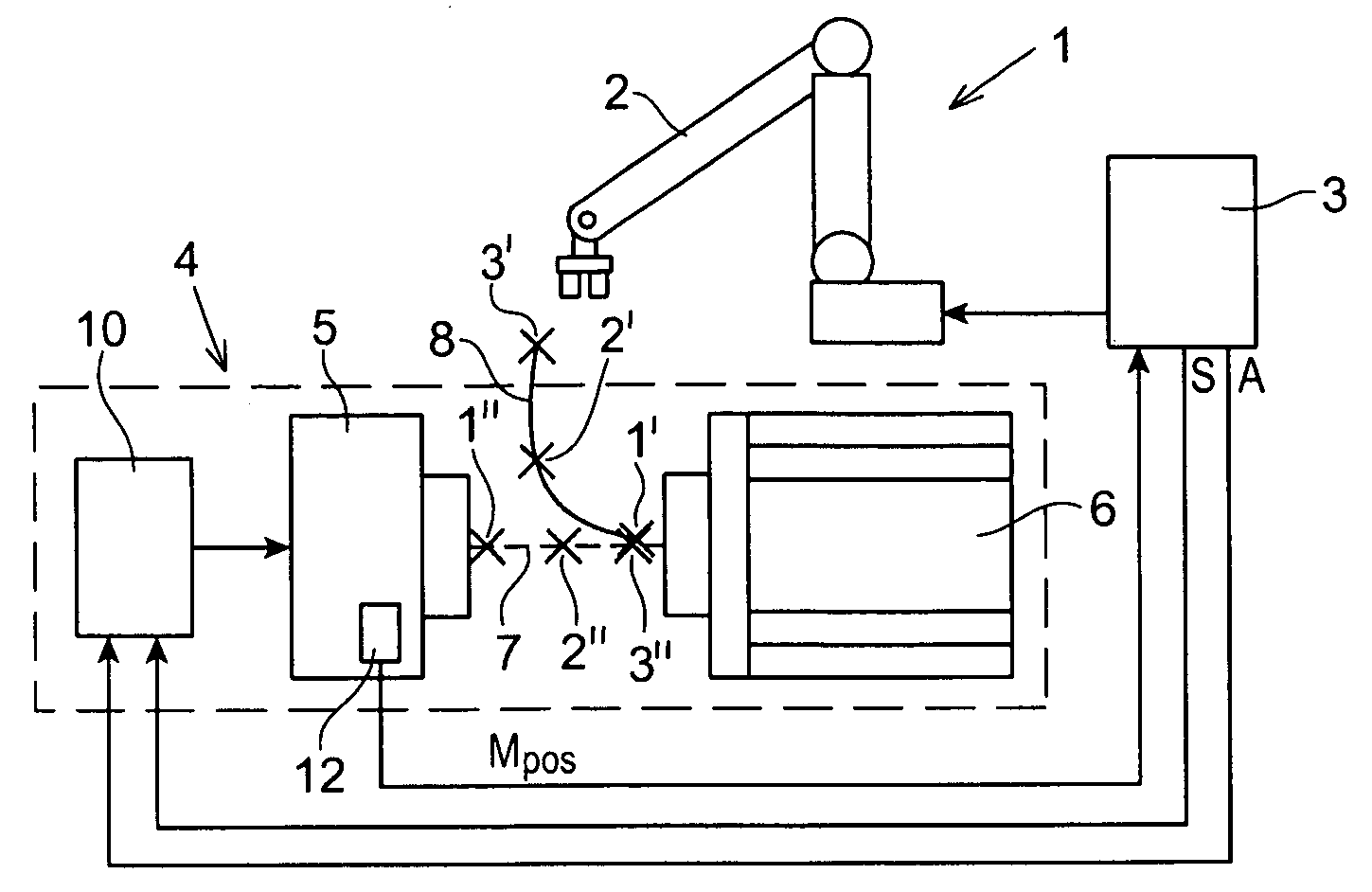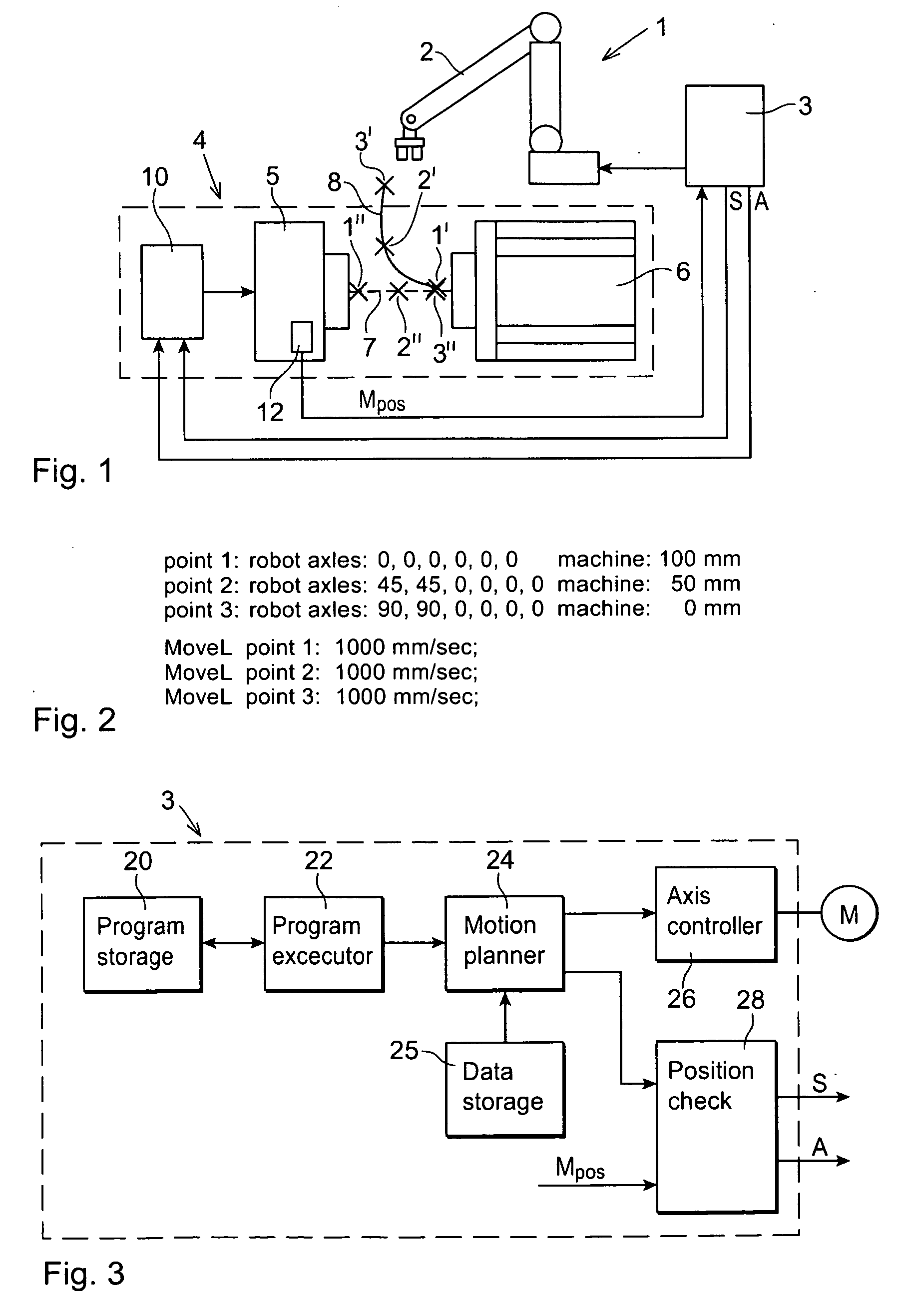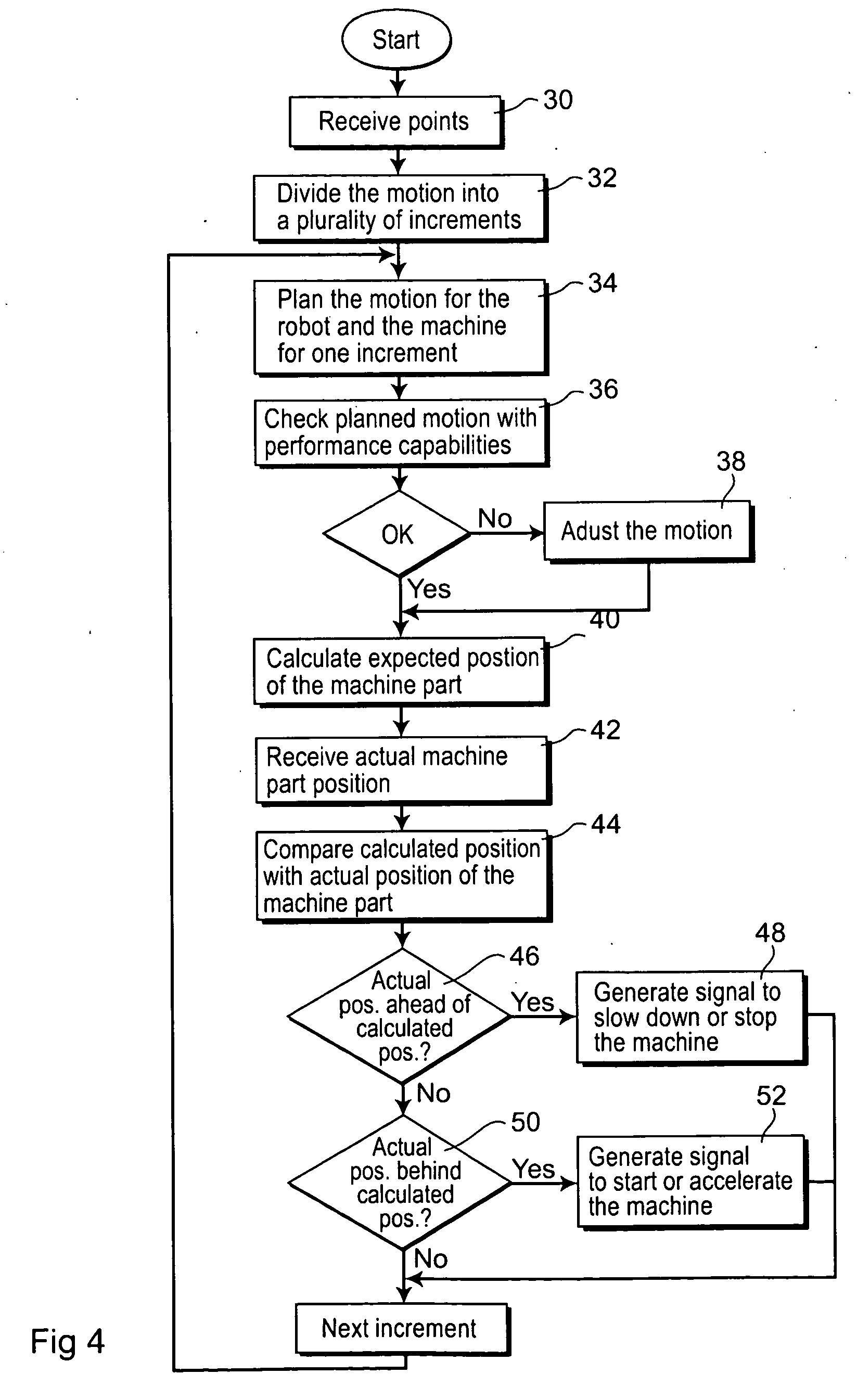Industrial Robot Tending A Machine And A Method For Controlling An Industrial Robot Tending A Machine
a technology of industrial robots and machines, applied in the direction of program control, total factory control, instruments, etc., can solve the problems of difficult to teach the robot motion, waste of valuable time, and difficult to predict if the robot can extract parts, etc., and achieve the effect of easy programming of the tending process
- Summary
- Abstract
- Description
- Claims
- Application Information
AI Technical Summary
Benefits of technology
Problems solved by technology
Method used
Image
Examples
Embodiment Construction
[0037]FIG. 1 shows an industrial robot 1 tending a machine 4 according to an embodiment of the invention. The industrial robot 1 includes a manipulator 2 movable about a plurality of axes and a robot controller 3 controlling the movements of the manipulator 2. The manipulator 2 includes a plurality of robot joints joined with each other so that they are rotatable or translatable relative to each other about a plurality of the axes. The robot 1 is provided with a tool, for example a gripper, adapted to pick the molded object from the machine 4 and to move it to another place for further processing. The tending of the machine may also include moving a workpiece to the machine and loading the machine with the workpiece. The manipulator includes a plurality of motors actuating the movements of the robot arms. The robot controller 3 includes an axis controller adapted to control signals, such as desired motor torques, to motors located in the manipulator 2. The control signals are genera...
PUM
 Login to View More
Login to View More Abstract
Description
Claims
Application Information
 Login to View More
Login to View More - R&D
- Intellectual Property
- Life Sciences
- Materials
- Tech Scout
- Unparalleled Data Quality
- Higher Quality Content
- 60% Fewer Hallucinations
Browse by: Latest US Patents, China's latest patents, Technical Efficacy Thesaurus, Application Domain, Technology Topic, Popular Technical Reports.
© 2025 PatSnap. All rights reserved.Legal|Privacy policy|Modern Slavery Act Transparency Statement|Sitemap|About US| Contact US: help@patsnap.com



